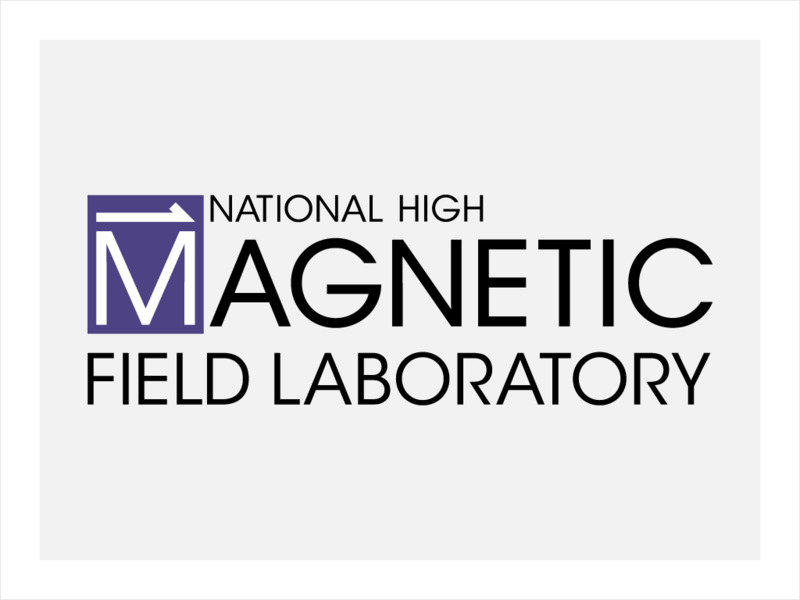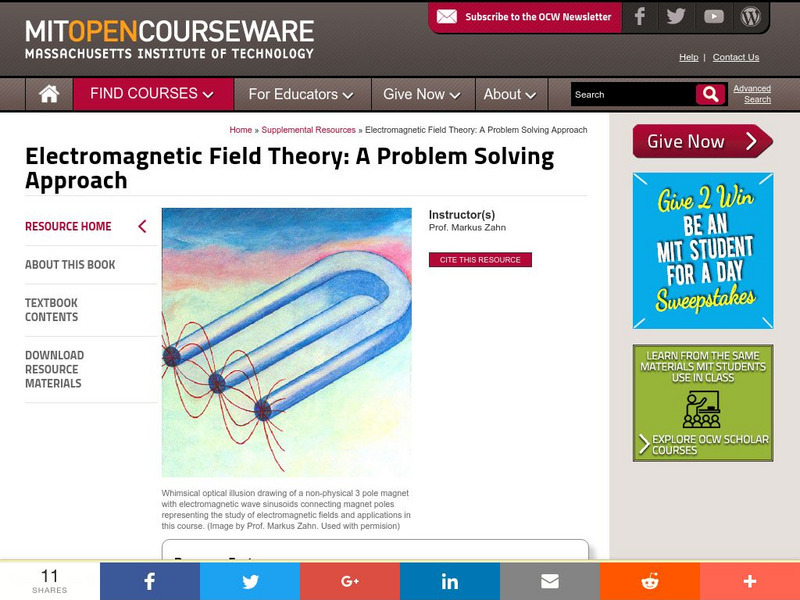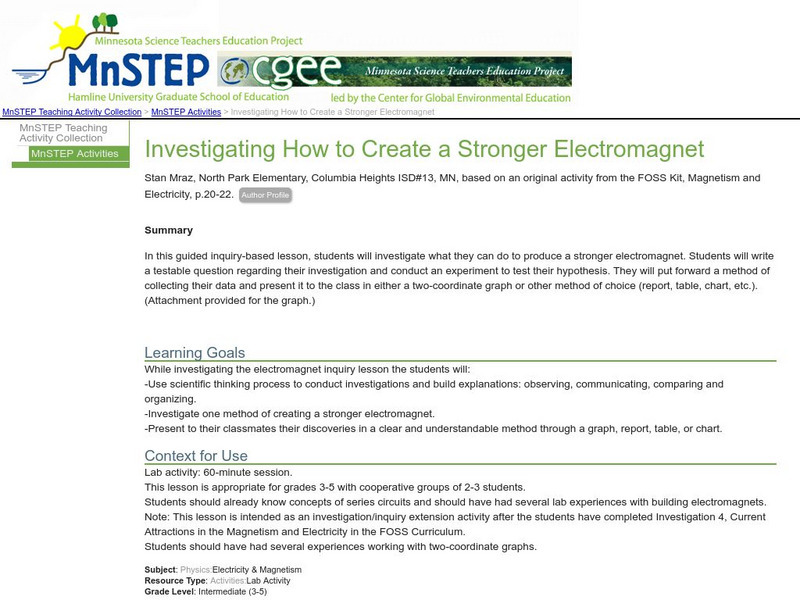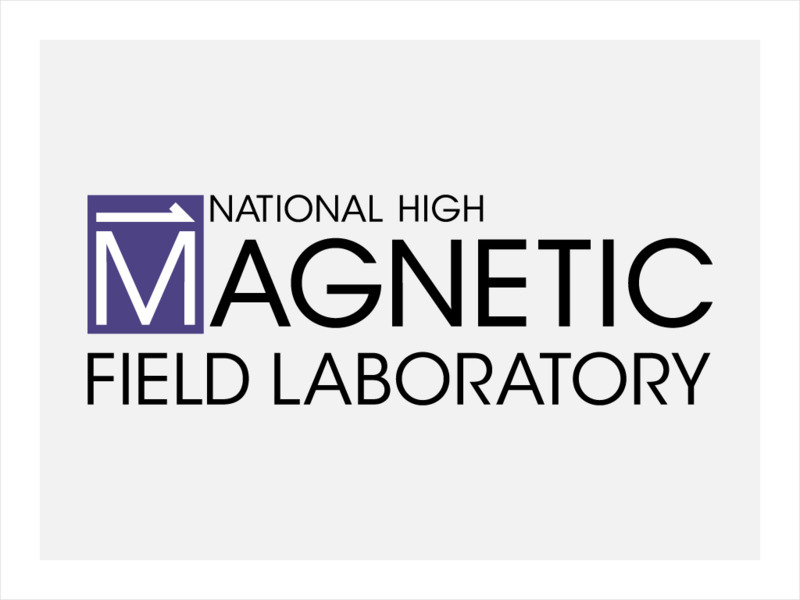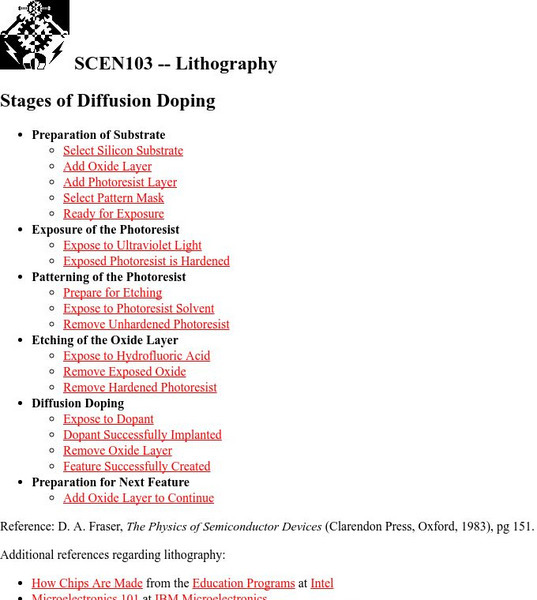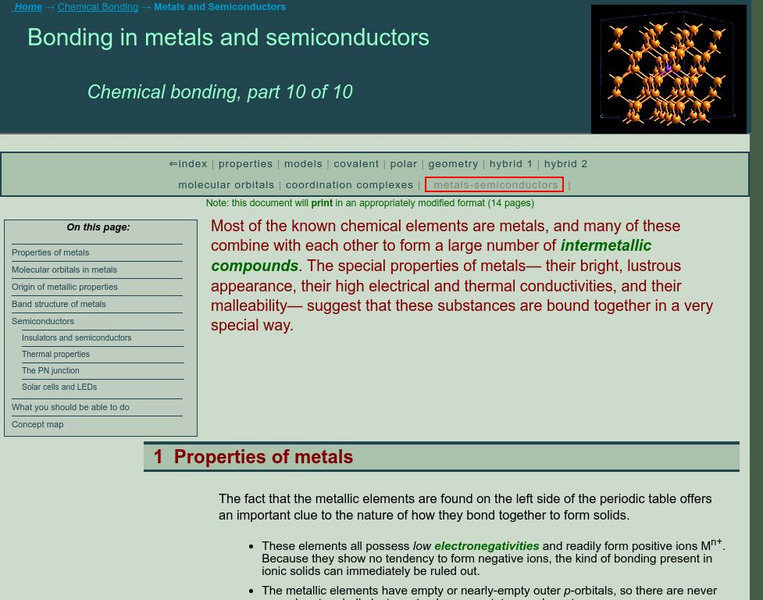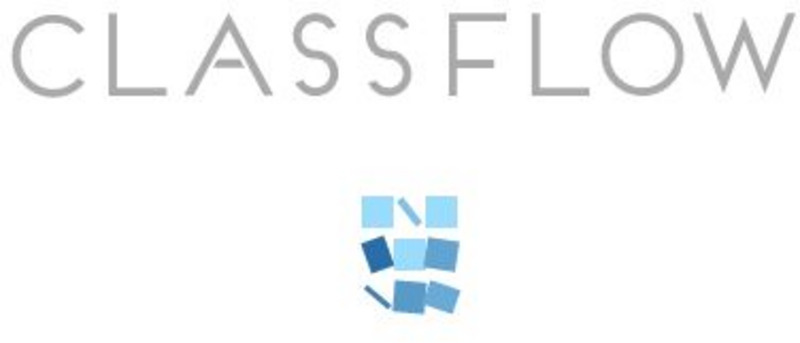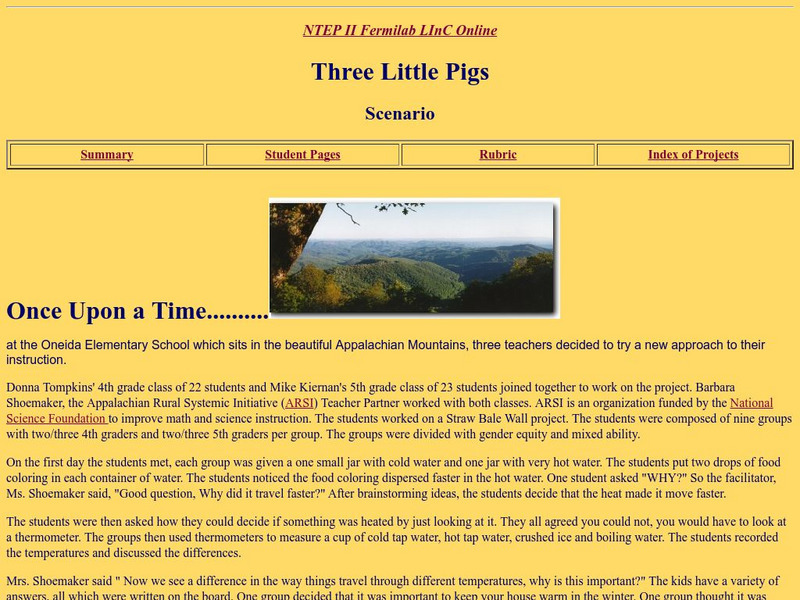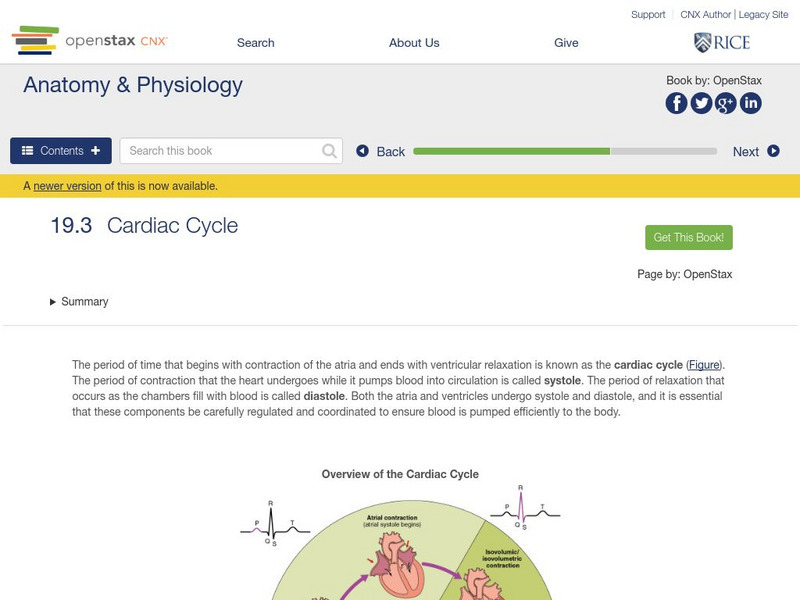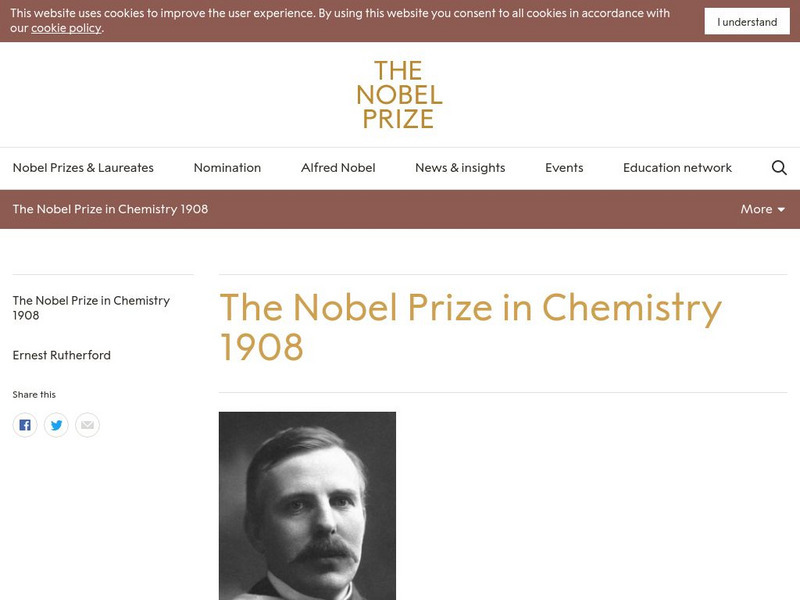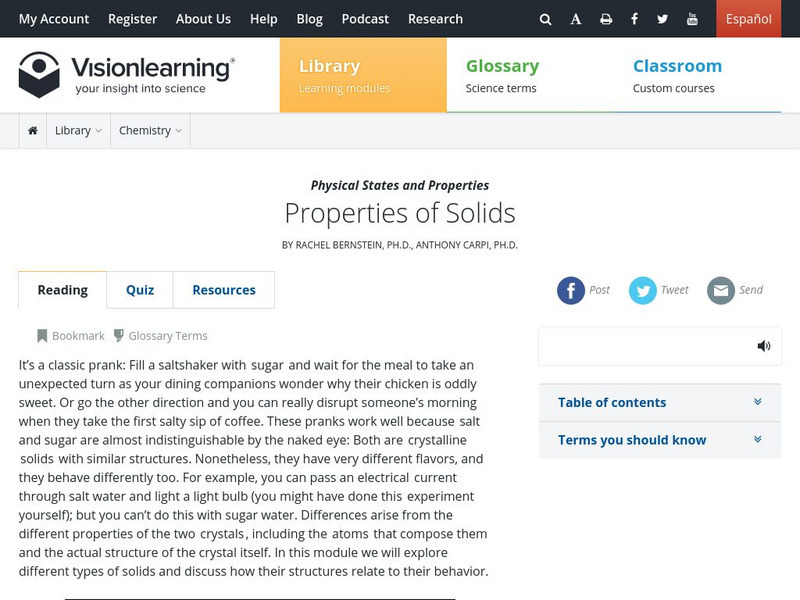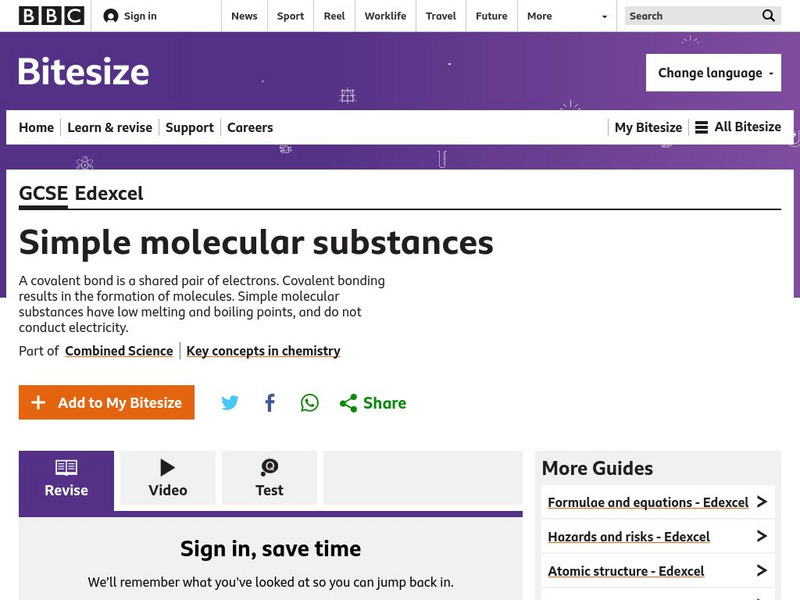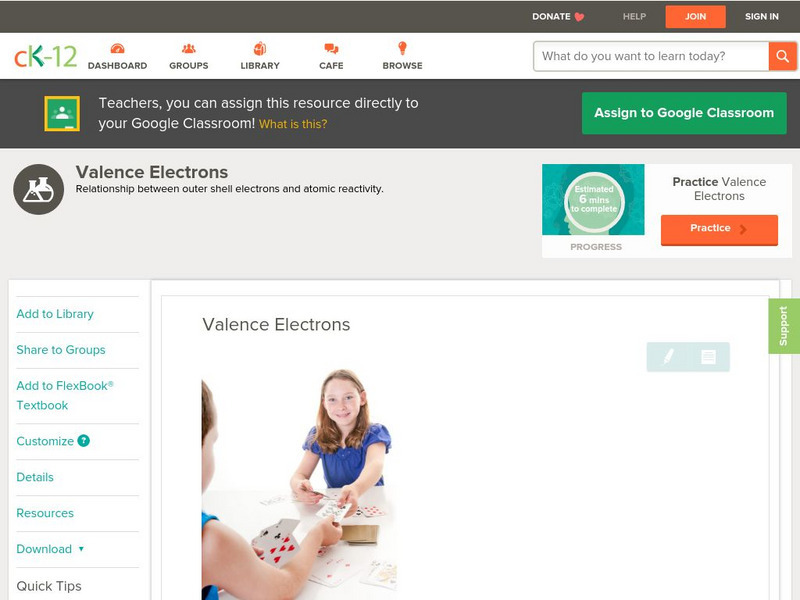American Association of Physics Teachers
Com Padre Digital Library: Open Source Physics: Faraday Disk Dynamo Model
This simulation demonstrates a rotating conducting disk in a magnetic field which produces a current or a self-exciting dynamo.
National High Magnetic Field Laboratory
Magnet Academy: Induced Current
A current can be induced in a conducting loop if it is exposed to a changing magnetic field. (Java tutorial)
Massachusetts Institute of Technology
Mit: Open Course Ware: Resources: Electromagnetic Field Theory
College-level electrical engineering textbook starting from the Coulomb-Lorentz force law on a point charge. Sample problems that reinforce the content are found at the end of each chapter. Includes downloadable excerpts of the textbook...
CK-12 Foundation
Ck 12: Resistivity
[Free Registration/Login may be required to access all resource tools.] The factors that affect resistivity are explained, e.g., wire gauge and length, and conductivity. Also touches upon semiconductors and superconductors. The use of...
Science Education Resource Center at Carleton College
Serc: Investigating How to Create a Stronger Electromagnet
In this lesson, students will investigate what they can do to produce a stronger electromagnet. Students will use the scientific thinking process to conduct investigations and build explanations. They will present their discoveries to...
National High Magnetic Field Laboratory
Magnet Academy: Duchenne Machine 1850
French physician Guillaume Benjamin Amand Duchenne invented a device that electrically stimulates muscles. The apparatus gave him new insight into neuromuscular disorders, earned him the epitaph of "father of electrotherapeutics," and...
Other
University of Delaware Physics Department: Lithography
University of Delaware Physics Department provides this indexing page for a slide show presentation.
Other
Univ. Of Delaware Physics: More Semiconductor Physics
The University of Delaware Physics Department provides this site from a site titled "Silicon, Circuits, and the Digital Revolution," here is a series of four pages which explain the details behind how semiconductors work. An introduction...
Science and Mathematics Initiative for Learning Enhancement (SMILE)
Smile: Electrostatics
A teacher lesson plan which includes activities pertaining to common methods of charging objects - induction, conduction, and friction.
Simon Fraser University
Chem1 Virtual Textbook: Metals, Insulators and Semiconductors
Acting as an overview from the General Chemistry Virtual Textbook, this site explores insulators in relation to metals and other semiconductors. Other topics include conduction band, dielectric breakdown, photoconductors, and more.
Curated OER
Electricity: Simple Circuits
Create your own simple electric circuit. Using simple supplies build your own battery and investigate conductivity. You can also construct a crossword puzzle with electrical vocabulary words.
ClassFlow
Class Flow: Thermal Energy
[Free Registration/Login Required] This flipchart reviews properties of thermal energy. Examples of Electrical energy, light waves, sound waves and conduction, convection and radiation are given.
Other
L in C Online: Three Little Pigs
An energy transfer project for junior high school students is presented and described. Takes the form of a teacher lesson plan. Students may be able to extract some ideas for a project or experiment.
TeachEngineering
Teach Engineering: Laser Types and Uses
Through two classroom demos, students are introduced to the basic properties of lasers through various mediums. In the Making an Electric Pickle demonstration, students see how cellular tissue is able to conduct electricity, and how this...
OpenStax
Open Stax: Anatomy & Physiology: Cardiac Cycle
Students learn the structure and function of the cardiac muscle and study the components of the conducting system that distributes electrical impulses through the heart during the cardiac cycle.
TeachEngineering
Teach Engineering: Environment
Through 10 lessons and more than 20 hands-on activities, students are introduced to the concept of an environment and the many interactions within it. As they learn about natural and human-made environments, as well as renewable and...
Nobel Media AB
The Nobel Prize: The Nobel Prize in Chemistry 1908
At this site read about Ernest Rutherford (1871-1937 CE), the scientist who was awarded the Nobel Prize in Chemistry, "for his investigations into the disintegration of the elements, and the chemistry of radioactive substances." This...
Vision Learning
Visionlearning: Physical States and Properties: Properties of Solids
Information about what solids are and properties associated with solid matter.
BBC
Bbc: Gcse Bitesize: Covalent Bonds
A covalent bond is formed between non metal atoms, which combine together by sharing electrons. Covalent compounds have no free electrons and no ions so they don't conduct electricity.
CK-12 Foundation
Ck 12: Physical Science: Valence Electrons
[Free Registration/Login may be required to access all resource tools.] Valence electrons, their variation in the periodic table and relation to reactivity and electrical conductivity of elements.
E-learning for Kids
E Learning for Kids: Science: Arctic Ocean: What Are Conductors and Insulators?
Visit Vlad and learn about the properties of conductors and insulators, and what materials are used for them.
Environmental Chemistry
Periodic Table of Elements: Gallium
A very detailed look at the element Gallium, a member of the Boron Group.
Environmental Chemistry
Periodic Table of Elements: Indium
A very detailed look at the element Indium, a member of the Boron Group.
Environmental Chemistry
Periodic Table of Elements: Thallium
A very detailed look at the element Thallium, a member of the Boron Group.

